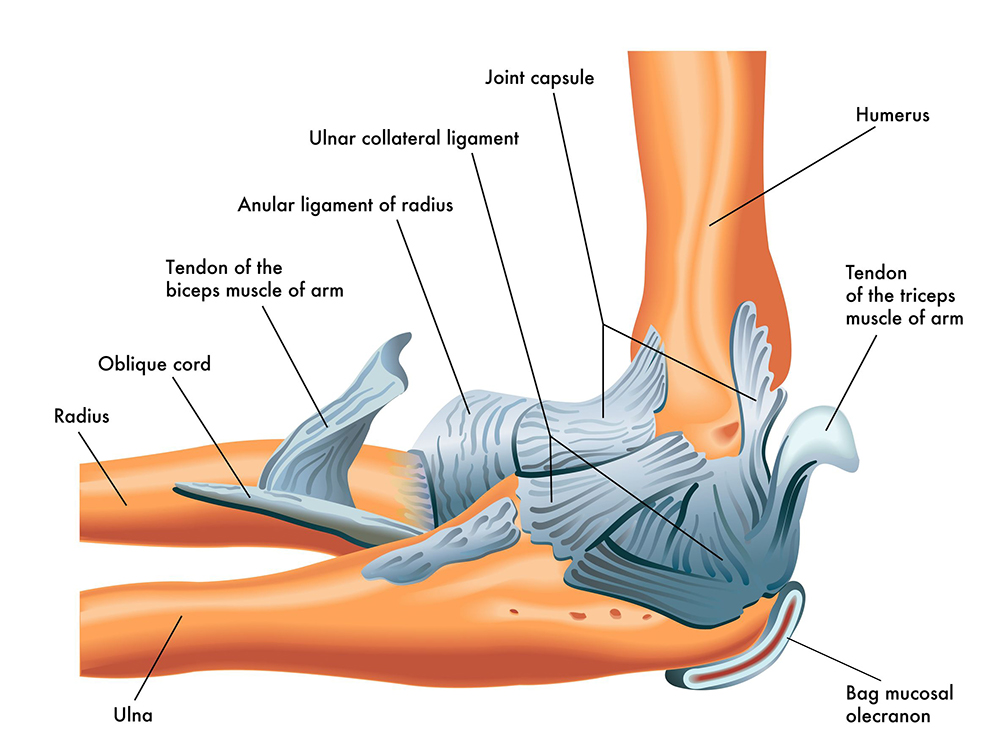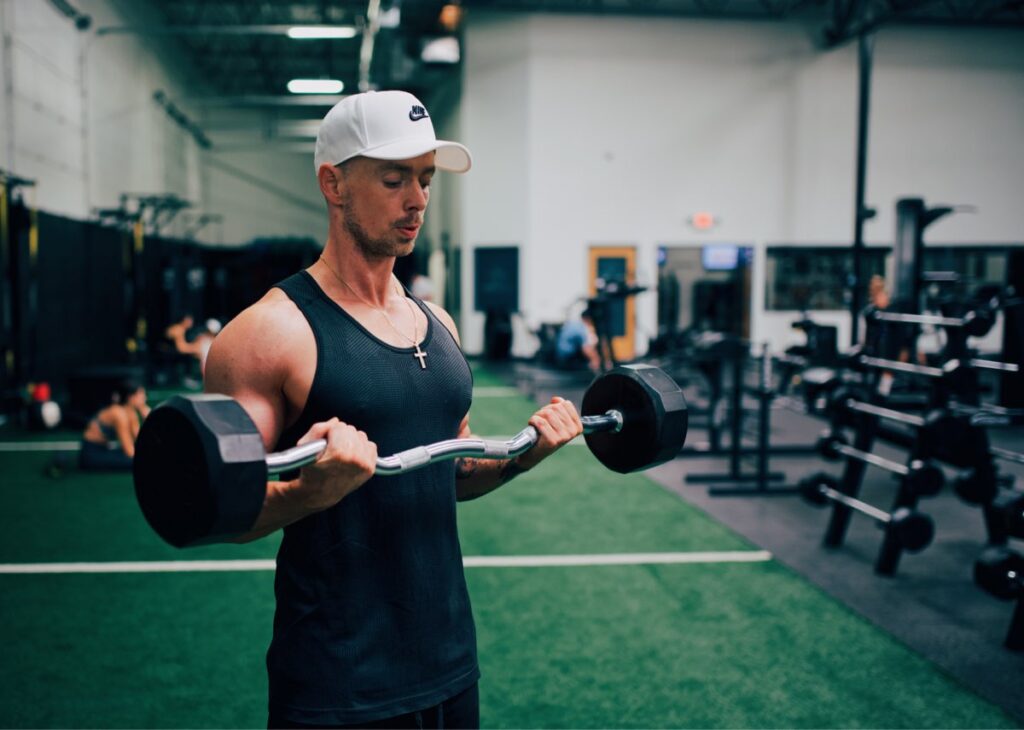Working Out Again After Golfers Elbow
Don't let the laymen's terms fool you – you don't have to be a tennis player or a golfer to suffer from tennis elbow or golfer's elbow. In fact, many athletes, workout enthusiasts and weight lifting newcomers experience elbow pain from these conditions due to incorrect form while lifting weights.
Before we get into possible reasonswhy your elbow hurts during or after your strength training, it's important to understand the basic anatomy of the elbow.
Elbow Anatomy Overview

The elbow is made up of three bones – the radius and ulna (forearm bones) and the humerus (upper arm bone) – as well as muscles, ligaments and tendons that hold the joint together. There are two bony bumps at the bottom of the humerus called epicondyles that connect the muscles and tendons in the forearm to the elbow. The bump on the outside of the elbow is called the lateral epicondyle and the bump on the inside of the elbow is the medial epicondyle.
The elbow allows for four basic functions: flexion, extension, supination and pronation. Tennis elbow and golfer's elbow typically involve stress during flexion and extension of the elbow and wrist, which occur in various strength training exercises.
What causes elbow pain when lifting weights?
While chest, triceps and shoulder exercises can all put pressure on the elbow, the most common cause of elbow pain during and after lifting is improper bicep curls. If you're experiencing inner elbow pain or outside elbow pain, it could be related to one or more common mistakes in your bicep curl form. If your pain doesn't subside after fixing your form, it's important to know when to see a doctor for your elbow injury.
Four Common Reasons for Elbow Pain from Bicep Curls
1. You're gripping the bar or dumbbell too tight.
Gripping the bar or dumbbell too tight activates the flexor tendon that allows your wrist to bend or curl forward. Even if your wrist maintains a neutral position throughout the curl, activating the flexor tendon in this way can lead to inner elbow pain and golfer's elbow.
2. You're not keeping your wrist in a strong, neutral position throughout the curl.
Similar to gipping the bar or dumbbell too tight, allowing your wrists to roll forward will activate the flexor tendon and can lead to inner elbow pain.
On the flip side, if you extend/bend your wrists backward during a curl, the weight will activate the extension tendons in your wrists that are attached to the outer side of your elbow, which can cause outside elbow pain and tennis elbow.

3. You're using too much weight.
While this may seem obvious, it's a bit more nuanced than you may think. Too much weight for your bicep curl may have nothing to do with your bicep strength – and everything to do with your grip and forearm strength.
As mentioned above, gripping too tightly or extending or flexing your wrist during a bicep curl can lead to inner and outside elbow pain. If your lack of grip strength causes you to over-grip the bar or dumbbells, or if your inadequate forearm strength causes a flexion or extension of the wrist, the weight is probably too heavy for you to curl while maintaining proper form. Poor form can lead to elbow pain and injury.
4. You're not varying your bicep curl workout.
According to the International Sports Sciences Association (the leading sports science teaching institution for personal trainers, strength training specialists, yoga instructors and group exercise instructors), there are 12 different variations of bicep curls.
Why is this important? Because repetition leads to overuse injuries. If you always do the same one or two types of bicep curls, your arms and elbows are repetitively stressed by the same forces. This can lead to tennis elbow and/or golfer's elbow. To avoid repetitive stress injuries, it's important to vary your strength training exercises.
What is Tennis Elbow?
Tennis elbow, also known as lateral epicondylitis, often involves the muscle called the Extensor Carpi Radialis Brevis (ECRB). This muscle in the forearm is responsible for the extension of the wrists and fingers. The extensors (forearm tendons) attach this muscle and other muscles to bone.
When the ECRB is weakened from overuse, microscopic tears in the extensor can form where it attaches to the lateral epicondyle (the outer bump on the elbow). This causes pain and inflammation, AKA tennis elbow.
What is Golfer's Elbow?
Golfer's elbow, also known as medial epicondylitis, is similar to tennis elbow but occurs on the opposite side of the elbow. A repetitive stress injury caused by overuse, golfer's elbow occurs from damage to the muscles and tendons that connect to the medial epicondyle (the inner bump on the elbow), which can cause severe inner elbow pain.
Tennis Elbow and Golfer's Elbow Treatments
Unlike a Tommy John injury or traumatic injuries that require elbow replacement surgery, tennis elbow and golfer's elbow typically only require non-surgical treatments and physical therapy. Ice, rest, anti-inflammatory medications and changes to repetitive stress movements are usually enough to treat tennis elbow and golfer's elbow.
If, however, your elbow pain does not subside in 6 to 12 months with rest and therapy, you should consult your orthopedic elbow specialist for steroidal or surgical options. While tennis elbow surgery and golfer's elbow surgery are not common, severe injuries may require arthroscopic elbow surgery.
If you are experiencing elbow pain and have questions for our orthopedic specialist, please contact us. We're happy to assist you in any way we can or schedule a consultation with our hand, elbow and wrist specialist.
Source: https://heidenortho.com/elbow-pain-lifting-tennis-golfers-elbow/
Belum ada Komentar untuk "Working Out Again After Golfers Elbow"
Posting Komentar